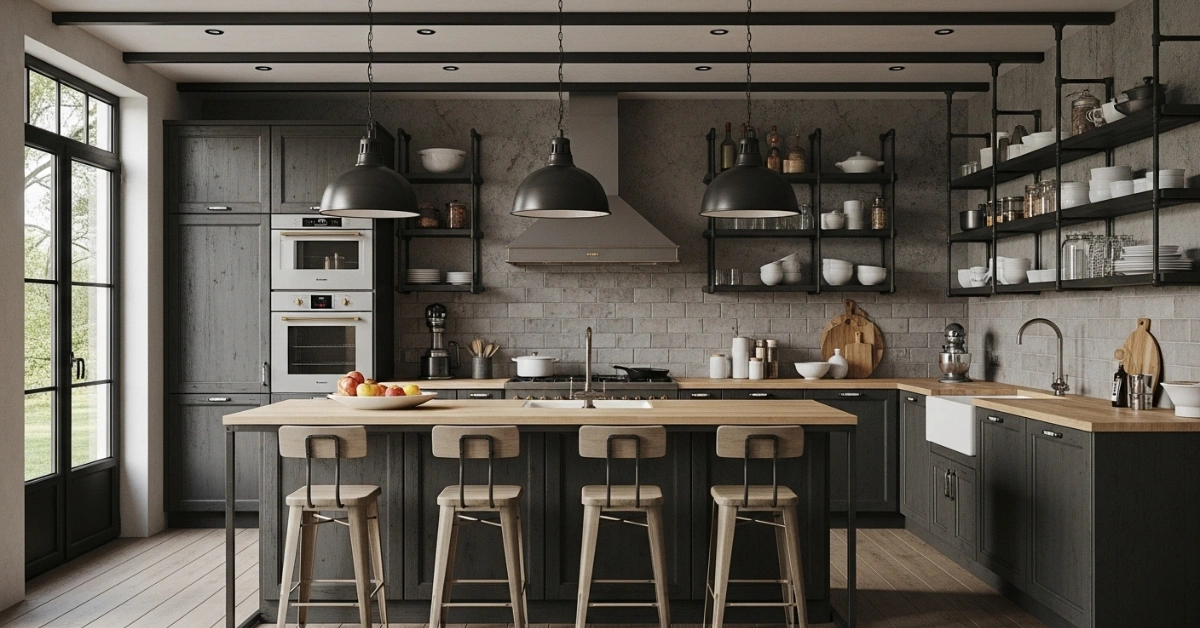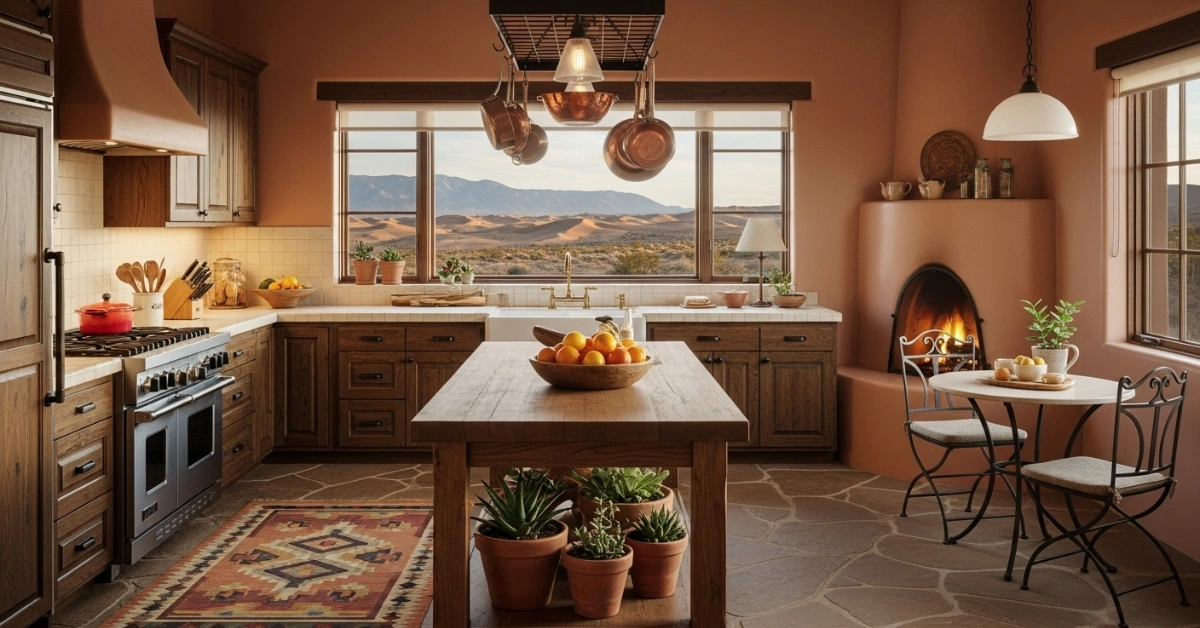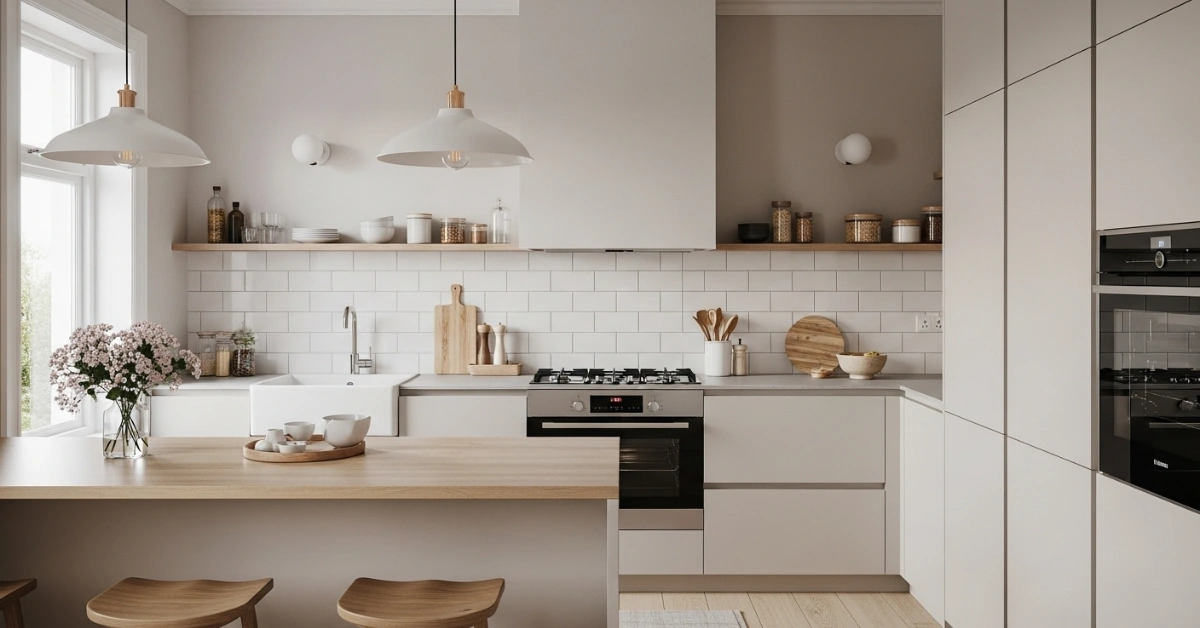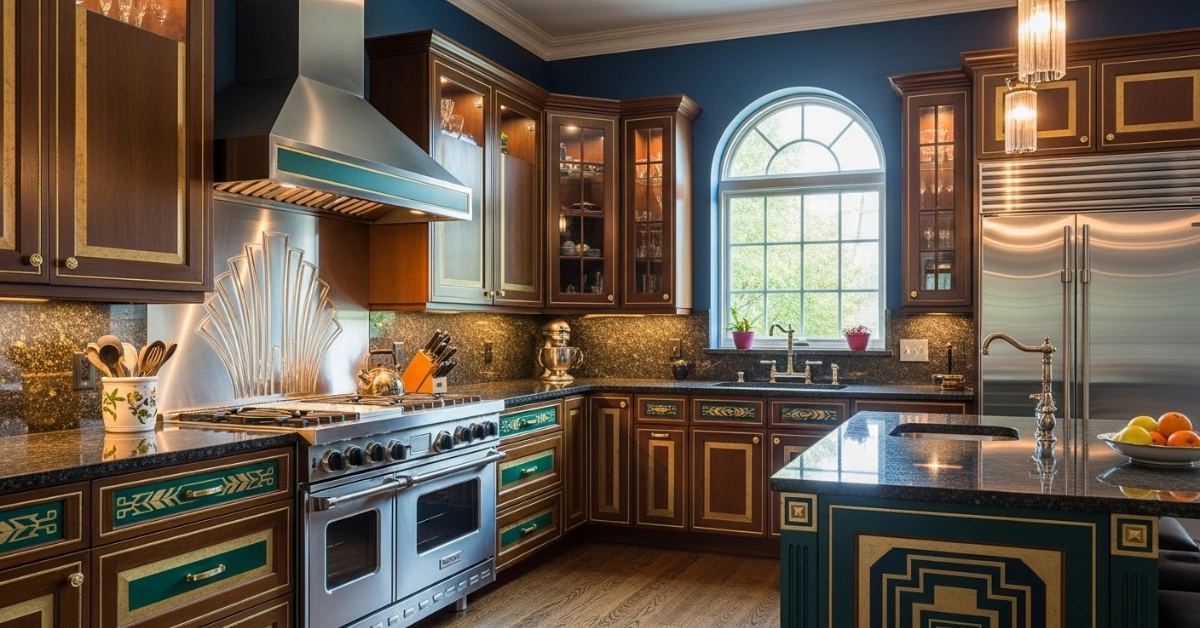Moroccan Kitchen Design: 16 Stunning Ideas for 2025

Are you tired of bland, cookie-cutter kitchens that lack personality? Many homeowners struggle to create a cooking space that feels unique, inviting, and reflective of their style. A Moroccan kitchen design could be the answer, blending rich cultural heritage with bold aesthetics to transform your home’s heart into a vibrant masterpiece.
In this guide, we’ll explore the essence of Moroccan kitchen design, offering practical tips, inspiring ideas, and expert insights to help you craft a space that’s both functional and breathtaking. Whether you’re planning a full renovation or a subtle refresh, you’ll find everything you need to bring this exotic style to life.

What Is Moroccan Kitchen Design?
Moroccan kitchen design draws inspiration from Morocco’s diverse cultural tapestry, combining influences from Berber, Arab, and Mediterranean traditions. It’s characterized by vibrant colors, intricate patterns, and handcrafted details that create a warm, inviting atmosphere. According to Architectural Digest, Moroccan interiors emphasize texture and craftsmanship, making them ideal for kitchens where functionality meets artistry (Source: Architectural Digest, 2023).

This style celebrates bold contrasts, think deep jewel tones paired with earthy neutrals or ornate tiles alongside rustic wood. It’s a design that tells a story, inviting guests to linger and savor the space.
Key Elements of Moroccan Kitchen Design
To create an authentic Moroccan kitchen, focus on these core components:
- Vivid Colors: Jewel tones like sapphire blue, emerald green, and ruby red dominate, often balanced with warm neutrals like terracotta or cream.
- Ornate Tiles: Hand-painted zellige tiles or geometric patterns are a hallmark, used on backsplashes, floors, or accent walls.
- Textured Materials: Incorporate natural elements like wood, brass, copper, and clay for an organic feel.
- Intricate Details: Arched doorways, carved woodwork, and filigree lanterns add elegance and authenticity.
- Layered Lighting: Combine ambient, task, and accent lighting with Moroccan lanterns for a cozy glow.

“A Moroccan kitchen should feel like a sensory journey, vibrant, tactile, and soulful,” says Amina El Idrissi, a Marrakech-based interior designer.
Why Choose Moroccan Kitchen Design?
This style isn’t just about aesthetics; it’s about creating a space that resonates emotionally. Here’s why homeowners are embracing Moroccan kitchen design in 2025:
- Timeless Appeal: Its blend of tradition and modernity ensures it stays relevant for years.
- Versatility: It works in small apartments or sprawling homes, adapting to various budgets.
- Cultural Richness: Each element reflects Morocco’s history, adding depth to your space.
- Sustainability: Handcrafted materials and natural elements align with eco-conscious trends.

A real-world example? My friend Sarah recently revamped her outdated kitchen with Moroccan-inspired tiles and brass fixtures. The result was a space that felt both luxurious and welcoming, sparking countless compliments from guests.
How to Incorporate Moroccan Kitchen Design: Practical Tips
Ready to bring this style into your home? Below are actionable ideas to create a Moroccan kitchen that’s both stunning and functional.
1. Start with a Bold Color Palette
Color is the soul of Moroccan design. Choose a palette that balances vibrant hues with grounding neutrals:
- Primary Colors: Deep blues, rich reds, or vibrant greens for cabinets or accent walls.
- Secondary Colors: Terracotta, mustard yellow, or ivory for balance.
- Accents: Gold, silver, or brass for hardware and fixtures.

Tip: Paint one wall in a bold color like cobalt blue and pair it with neutral cabinets for a modern twist. For smaller kitchens, use pops of color in accessories like rugs or curtains.
2. Embrace Iconic Moroccan Tiles
Zellige tiles, with their handcrafted, slightly irregular finish, are a must. These tiles add texture and visual interest to your kitchen.
- Backsplash: Create a focal point with geometric or floral-patterned tiles.
- Flooring: Opt for large-scale patterns in neutral tones to ground the space.
- Countertops: Use tiles as an alternative to stone for a unique look.

Cost Insight: According to Houzz, zellige tiles range from $15–$50 per square foot, but you can save by using them sparingly (Source: Houzz, 2024).
“Zellige tiles are like jewelry for your kitchen, use them strategically for maximum impact,” suggests designer Khalid Amrani.
3. Incorporate Natural Materials
Moroccan kitchens celebrate raw, organic textures. Consider these materials:
- Wood: Rustic beams or carved cabinets add warmth.
- Metal: Brass or copper sinks and faucets bring a touch of luxury.
- Clay: Terracotta pots or serving dishes double as decor.
- Stone: Marble or limestone countertops complement the style.

Example: I visited a home where the owner paired a reclaimed wood island with a brass faucet. The contrast was striking yet harmonious.
4. Add Ornate Lighting
Lighting sets the mood in a Moroccan kitchen. Moroccan lanterns, with their intricate metalwork, cast beautiful patterns across the room.
- Pendant Lights: Hang filigree lanterns above the island for drama.
- Wall Sconces: Use brass or iron sconces for soft, ambient light.
- Candles: Cluster candles in decorative holders for warmth.

Tip: Mix lighting types—task lighting for prep areas, ambient for dining, to create a layered effect.
5. Use Arches and Curves
Arched doorways, niches, or windows are iconic in Moroccan architecture. If structural changes aren’t feasible, mimic the look with:
- Arched mirrors above the sink.
- Curved cabinet detailing.
- Rounded tile edges on backsplashes.

These shapes soften the space, making it feel more inviting.
6. Layer Textiles and Accessories
Textiles add warmth and personality. Incorporate these elements:
- Rugs: A Berber or kilim rug in bold patterns anchors the space.
- Curtains: Lightweight, patterned fabrics in jewel tones.
- Cushions: Add patterned cushions to bar stools or a breakfast nook.

Accessories: Display hand-painted ceramics, brass trays, or woven baskets for authenticity.
7. Blend Modern and Traditional Elements
To keep your kitchen practical, blend Moroccan flair with modern conveniences:
- Appliances: Choose sleek, stainless steel appliances to contrast with ornate tiles.
- Layout: Opt for an open-plan design for a contemporary feel.
- Storage: Incorporate hidden cabinets to maintain a clutter-free look.

Example: A client I worked with paired zellige tiles with a minimalist island, creating a perfect balance of old and new.
Moroccan Kitchen Design Styles to Explore
Moroccan kitchen design isn’t one-size-fits-all. Here are three popular variations to inspire you:
1. Traditional Moroccan Kitchen
- Features: Heavy use of zellige tiles, carved wood, and brass accents.
- Best For: Large spaces with high ceilings.
- Vibe: Opulent and richly detailed.
- Example: Think of a Marrakech riad with vibrant tiles covering every surface.

2. Modern Moroccan Kitchen
- Features: Subtle patterns, neutral palettes, and sleek finishes.
- Best For: Urban apartments or minimalist homeowners.
- Vibe: Clean and sophisticated with Moroccan accents.
- Example: A white kitchen with a geometric tile backsplash and brass hardware.

3. Bohemian Moroccan Kitchen
- Features: Eclectic mix of patterns, colors, and textures.
- Best For: Creative types who love bold experimentation.
- Vibe: Free-spirited and cozy.
- Example: A kitchen with mismatched tiles, colorful rugs, and potted plants.

Common Mistakes to Avoid in Moroccan Kitchen Design
Even with the best intentions, pitfalls can derail your project. Here’s what to watch out for:
- Overdoing Patterns: Too many bold tiles or textiles can feel chaotic. Stick to one or two focal points.
- Ignoring Functionality: Ornate designs shouldn’t compromise storage or workflow.
- Poor Lighting: Avoid harsh overhead lights; opt for warm, layered lighting.
- Low-Quality Materials: Invest in authentic tiles and fixtures for durability.
Tip: Create a mood board to visualize your design before committing to purchases.
Moroccan Kitchen Design on a Budget
You don’t need a fortune to achieve this look. Here are budget-friendly ideas:
- DIY Tiles: Use tile stickers or stencils to mimic zellige patterns.
- Thrifted Accessories: Hunt for brass trays or ceramics at flea markets.
- Paint: A bold wall color can transform the space for under $50.
- Mix and Match: Combine affordable tiles with premium ones for impact.

Example: A neighbor revamped her kitchen for $500 using painted cabinets, tile decals, and thrifted lanterns.
Moroccan Kitchen Design Trends for 2025
Stay ahead of the curve with these emerging trends:
- Sustainable Materials: Bamboo cabinets and recycled tiles are gaining traction.
- Monochrome Patterns: Black-and-white zellige tiles for a modern twist.
- Mixed Metals: Combining brass, copper, and silver for depth.
- Bold Ceilings: Painted or tiled ceilings as a statement feature.

“In 2025, we’re seeing Moroccan kitchens embrace sustainability without sacrificing style,” notes designer Fatima Zahra.
Comparison: Moroccan vs. Other Kitchen Styles
To help you decide if this style is right for you, here’s how it stacks up:
| Style | Key Features | Best For | Moroccan Comparison |
|---|---|---|---|
| Moroccan | Bold colors, ornate tiles, textures | Unique, vibrant spaces | N/A |
| Mediterranean | Soft blues, whites, rustic stone | Coastal or airy homes | Less bold; more neutral tones |
| Modern | Sleek lines, minimalism, neutral | Urban, functional spaces | More ornate and colorful |
| Farmhouse | Shiplap, wood, soft colors | Cozy, rural homes | Less rustic; more intricate detailing |
FAQs About Moroccan Kitchen Design
- How much does a Moroccan kitchen cost?
Costs vary, but expect $10,000–$50,000 for a full remodel, depending on materials and labor (Source: HomeAdvisor, 2024). - Can I use Moroccan design in a small kitchen?
Yes! Use lighter colors and smaller-scale patterns to avoid overwhelming the space. - Where can I find authentic Moroccan tiles?
Reputable sources include Morocco-based artisans on Etsy or specialty retailers like Cle Tile or Zia Tile. - Is Moroccan design high-maintenance?
Handcrafted tiles may require sealing, but modern materials make upkeep easy.
Conclusion: Create Your Dream Moroccan Kitchen
Moroccan kitchen design offers a unique way to infuse your home with color, culture, and charm. By blending vibrant tiles, natural textures, and thoughtful details, you can create a space that’s both functional and inspiring. Whether you’re drawn to traditional opulence or a modern twist, this style promises a kitchen that feels like a work of art.
Ready to start your transformation? Begin by choosing one element, like a bold backsplash or a brass lantern and build from there. Your dream Moroccan kitchen is closer than you think!
Share your Moroccan kitchen ideas in the comments or contact a local designer to bring your vision to life. Let’s create a space that tells your story!






